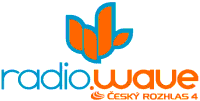
| The Public Service |
 |
followthemedia.com - a knowledge base for media professionals |
|
|
AGENDA
|
||
“Third Way” is New Direction for PSB Youth ChannelsPSB youth channels typically follow one of two formats — the more program-driven “educational/alternative” option and the standard-fare contemporary hit radio (CHR), which competes more openly with commercial stations. A “third way” is developing; pleasing to pleasing to public broadcasters, upsetting their private competitors.Almost all European public service broadcasters (PSBs) offer distinct radio channels for young people, according to Laurent Marceau, head of Eurosonic for the European Broadcasting Union (EBU). Eesti Raadio channel 2 in Estonia follows the educational/alternative approach while BBC Radio 1 is the European icon for mainstream CHR public radio. 
Czech public broadcaster Cesky rozhlaz (CRo) tempted fate and turned up the music, launching its new Prague youth channel, Radio Wave, at 13:13 local time on Friday 13 January this year. For the superstitious, Friday the 13th is a day for treading carefully. “We got the noise, so here we go. This is our voice. This is our show.” The classic track from German heavy metal band Donots opened the first Radio Wave broadcast. Program director Ladislav Lindner-Kylar said the station format is a “third way,” debated for a decade or more. Programs for young people started at CRo in the Sixties, when the streets and times were hot. “Mikroforum,” a magazine program for young people, offered music and commentary in the Seventies and Eighties, said Lindner-Kylar. After the 1989 revolution, it became Elan+Mikroforum, in collaboration with Slovak Radio, and lasted until 1993.
Discussions about a youth channel started in 1996, said Lindner-Kylar. Unsurprisingly, the plans took several directions over the years. The commercial radio explosion in the early and mid-Nineties offered the only radio targeting young people. Over the last five years, the Internet, travel abroad and higher incomes have influenced Czech youngsters, raising awareness of music outside their country but also raising appreciation of Czech music. CRo first tried Radio Mama, then Alternativa, an independent station, and then Radium, an Internet radio channel. Radium was a 30-minute program aired six times a week on CRo 6. The idea of youth channel CRo4 developed from a combination of all these attempts. Several of the current Radio Wave staff came from Radium. The Radio Wave format reaches for listeners but, more importantly, for a style, what Lindner-Kylar calls “street-radio.” “Through the day, Radio Wave broadcasts a mix of hiphop, rock, electronic music, pop and other styles. In the evening, it airs special shows with a variety of genres, such as ska, dub and punk. Short newscasts inform listeners on events, culture and sports. “We would also like to become an important part of the local club scene and offer broadcast time to local artists who still do not have a chance to be played on other stations,” said Lindner-Kylar. Radio Wave launched on FM in Prague and Central Bohemia but also followed on DVB-T multiplexes in two other cities. Lindner-Kylar said that reaching listeners in other cities is particularly important for the public broadcaster. As the Czech radio market develops, secondary regions are becoming more competitive. The commercial dance music station Radio Helax in the eastern city of Ostrava nearly tripled its audience in the third and fourth quarters of 2005 over the same period in 2004, according to the Marketprojekt audience survey. According to Marceau, who, through Eurosonic, works with all PSB youth channels, the difference between the public and private offerings is striking. “It is the support for new music, new artists and local news,” he said. “That is what makes PSB channels specific.” Latvijas Radio 2, the radio service for Latvian young people, became a 24-hour channel in 2002 after several years in single program form. The Lithuanian public broadcaster is set to launch a youth channel later this year. The rise of PSB youth radio may be popular with listeners but private, commercial radio operators are less happy. The suggestion of starting a new youth channel in Bavaria by German public broadcaster Bayerischer Rundfunk (BR) sparked a strongly negative reaction from the private broadcasters’ association Verband Privater Rundfunk und Telekommunikation (VPRT). “The public broadcasters, shown by the example of n-Joy, Eins Live or Jump in other German states, attempt to leverage their FM frequencies, change formats and ignore even more the means of supply,” said VPRT spokesperson Hans-Dieter Hillmuth. According to Hillmuth, the BR plans do not conform to the fundamental political agreement that there is to be no more expansion of public radio. “The public broadcaster should think about its own radio offering instead of always new commercial programs,” he said. There was similar criticism from the Czech private radio association Asociace provozovatelù soukromého vysílání (APSV). Executive director Michal Zelenka said the new youth channel from the public broadcaster was “unnecessary.” Construction of new Radio Wave studios and offices, separate from the CRo Prague complex, began in February, with a move scheduled for mid-summer. With a staff of 40 and everything new ahead of it, Radio Wave is ready to grow. Previously published in Radio World International, July 2006, in a slightly different form. Editors note: Michael Hedges traveled through the new EU Member States, September 2005 through February 2006, surveying the audiovisual sector for European Commission Social Dialogue committee. The reports for ftm are his own observations and do not reflect the positions of the European Commission or any of the members of the Social Dialogue committee. |
| copyright ©2004-2009 ftm partners, unless otherwise noted | Contact Us • Sponsor ftm |